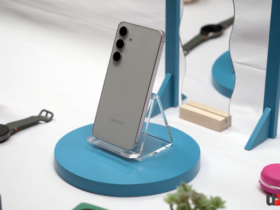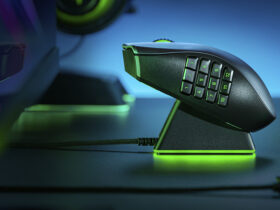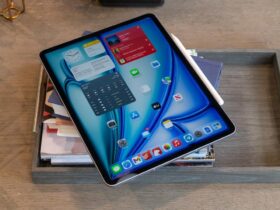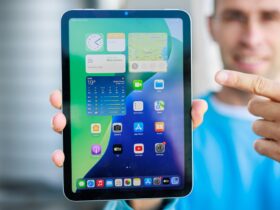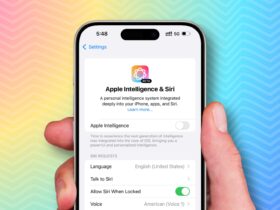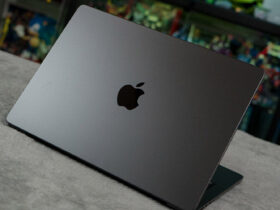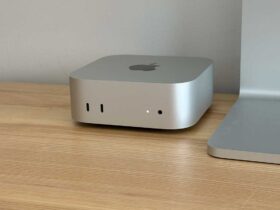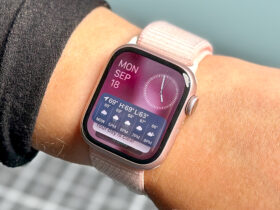Daftar Isi
In our increasingly digitized lives, the security of our personal gadgets—be it smartphones, wearables, or laptops—is of paramount importance. Biometric security, once the stuff of science fiction, has now become an integral part of our daily interactions with technology. From unlocking our phones with a fingerprint to authorizing payments using facial recognition, biometrics is shaping the future of security. Let’s explore the trends and innovations that promise to revolutionize biometric security in gadgets.
The Rise of Frictionless Authentication
Seamless User Experience
Biometric authentication methods, such as facial recognition and fingerprint recognition, are gaining traction due to their seamless user experience. Gone are the days of remembering complex passwords or PINs. With a simple glance or touch, users can unlock their devices, authorize transactions, and access sensitive information. This frictionless approach not only enhances convenience but also encourages widespread adoption.
Multi-Modal Biometric Security Systems
As technology continues to evolve, the realm of biometric authentication is undergoing a transformative shift towards multi-modal biometrics. This innovative approach involves combining multiple biometric security modalities, such as facial recognition, voice authentication, and fingerprint scanning, to create a more robust and secure authentication system. Let’s delve into the potential of multi-modal biometrics and its implications for the future of digital security:
Imagine a scenario where your smartphone seamlessly verifies your identity using a combination of facial, voice, and fingerprint recognition technologies. This multi-modal approach not only enhances security but also offers greater flexibility and reliability in authentication processes. For instance, in situations where one biometric modality may fail due to environmental factors or technical limitations (such as poor lighting conditions for facial recognition), alternative modalities can seamlessly step in to ensure uninterrupted authentication.
Mitigate the Limitation
One of the key advantages of multi-modal biometrics is its ability to mitigate the limitations of individual biometric modalities. By leveraging multiple factors for authentication, the likelihood of false positives or false negatives is significantly reduced, enhancing overall accuracy and reliability. This dynamic and adaptive approach to authentication enables organizations and individuals to establish robust security protocols that are resilient to various environmental and technological challenges.
Furthermore, as technology continues to advance, we can expect to see the emergence of gadgets and devices equipped with sophisticated multi-modal biometric security capabilities. From smartphones and tablets to smart locks and access control systems, these innovative solutions will revolutionize the way we authenticate our identities and interact with digital devices and services.
In addition to bolstering security, multi-modal biometrics also holds promise for enhancing user experience and convenience. By seamlessly integrating various biometric factors into authentication processes, users can enjoy a frictionless and intuitive authentication experience, eliminating the need for cumbersome passwords or PINs.
Read More: Windows Hello: Biometric Authentication that Becomes the Center of Attention
Beyond Unlocking: Biometrics in Everyday Tasks
Contactless Payments
Biometric security is revolutionizing payment processes. Imagine walking into a store, selecting your items, and simply glancing at a point-of-sale terminal to complete the transaction. No cards, no PINs—just your biometric data confirming your identity. This contactless payment experience is not only convenient but also secure. As more merchants adopt biometric security payment systems, our wallets will become lighter, and our transactions safer.
Health and Wellness Monitoring
Wearable gadgets are increasingly incorporating biometric sensors. From heart rate monitoring to sleep tracking, these devices collect valuable health data. But what if they could also authenticate your identity? Imagine a smartwatch that not only tracks your steps but also ensures that only you can access your health records. Biometrics will play a crucial role in securing our health-related data, ensuring privacy and accuracy.
Conclusion: A Secure and Connected Future
As biometric security technology evolves, so does our relationship with gadgets. The future promises gadgets that recognize us, adapt to our needs, and protect our digital lives. Whether it’s securing our smartphones, enabling seamless payments, or safeguarding our health data, biometrics is at the forefront of innovation. So, the next time you unlock your phone with a fingerprint or a glance, remember that you’re experiencing the future of security—one biometric security scan at a time.
Data Source: According to Transparency Market Research, the global biometrics market is projected to reach $136.18 billion by 2031, driven by increasing adoption across various industries1.






